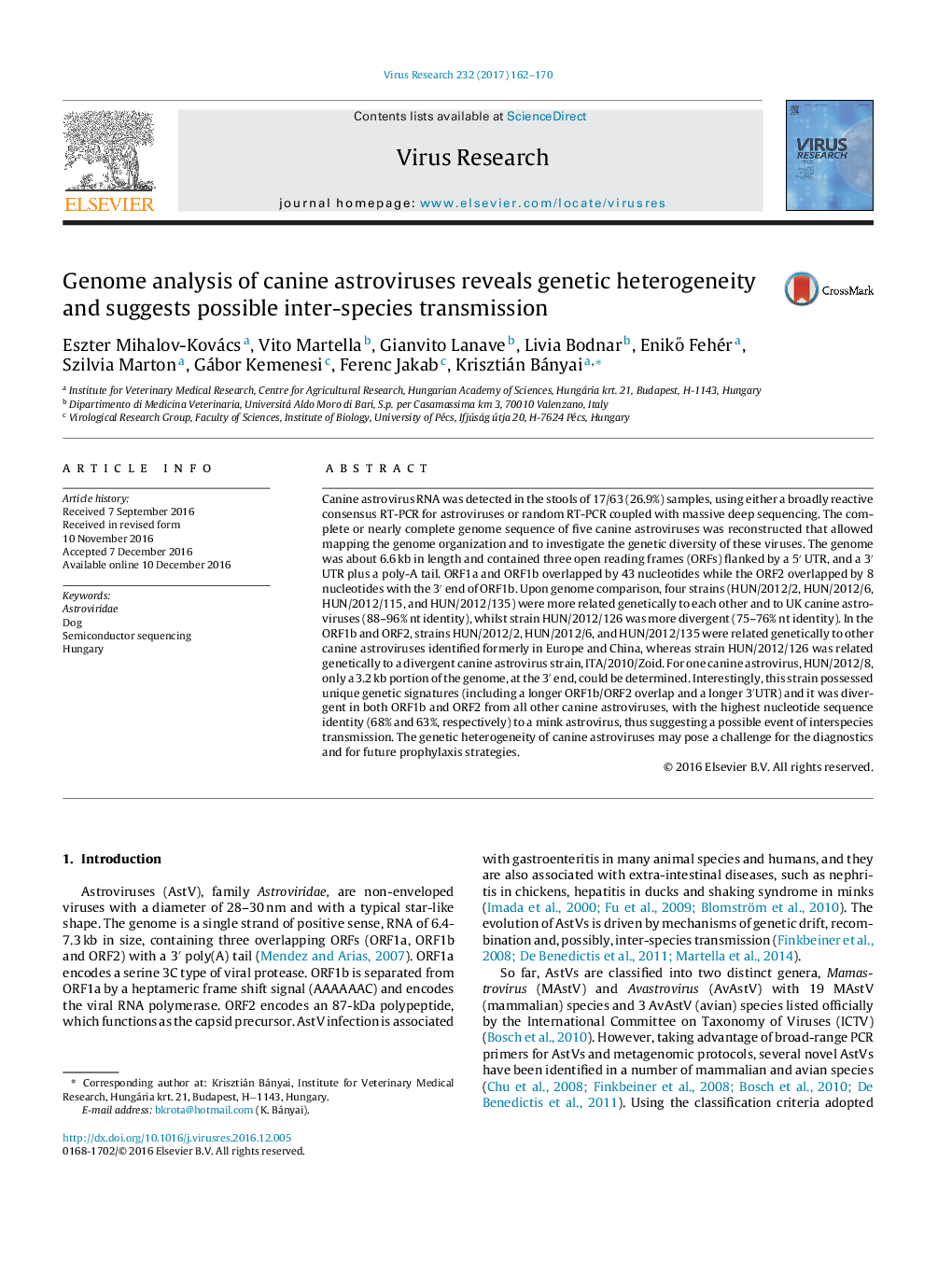| کد مقاله | کد نشریه | سال انتشار | مقاله انگلیسی | نسخه تمام متن |
|---|---|---|---|---|
| 5675574 | 1594325 | 2017 | 9 صفحه PDF | دانلود رایگان |
- We sequenced the genome of several canine astroviruses.
- Genetic heterogeneity was detected among strains.
- A novel strain related to mink astrovirus was identified.
Canine astrovirus RNA was detected in the stools of 17/63 (26.9%) samples, using either a broadly reactive consensus RT-PCR for astroviruses or random RT-PCR coupled with massive deep sequencing. The complete or nearly complete genome sequence of five canine astroviruses was reconstructed that allowed mapping the genome organization and to investigate the genetic diversity of these viruses. The genome was about 6.6Â kb in length and contained three open reading frames (ORFs) flanked by a 5â² UTR, and a 3â² UTR plus a poly-A tail. ORF1a and ORF1b overlapped by 43 nucleotides while the ORF2 overlapped by 8 nucleotides with the 3â² end of ORF1b. Upon genome comparison, four strains (HUN/2012/2, HUN/2012/6, HUN/2012/115, and HUN/2012/135) were more related genetically to each other and to UK canine astroviruses (88-96% nt identity), whilst strain HUN/2012/126 was more divergent (75-76% nt identity). In the ORF1b and ORF2, strains HUN/2012/2, HUN/2012/6, and HUN/2012/135 were related genetically to other canine astroviruses identified formerly in Europe and China, whereas strain HUN/2012/126 was related genetically to a divergent canine astrovirus strain, ITA/2010/Zoid. For one canine astrovirus, HUN/2012/8, only a 3.2Â kb portion of the genome, at the 3â² end, could be determined. Interestingly, this strain possessed unique genetic signatures (including a longer ORF1b/ORF2 overlap and a longer 3â²UTR) and it was divergent in both ORF1b and ORF2 from all other canine astroviruses, with the highest nucleotide sequence identity (68% and 63%, respectively) to a mink astrovirus, thus suggesting a possible event of interspecies transmission. The genetic heterogeneity of canine astroviruses may pose a challenge for the diagnostics and for future prophylaxis strategies.
Journal: Virus Research - Volume 232, 15 March 2017, Pages 162-170
